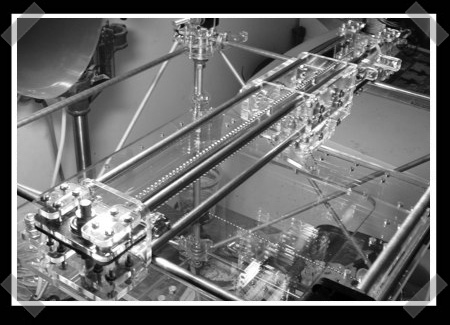
We’ve seen a lot of 3d printing lately, with the RepRap and Cupcake, both the fused deposition modeling type. We don’t often see the Inkjet method. This is a great example of one, built in someones home. Instead of laying down layers of molten plastic, he uses the inkjet system to deposit glue like substances into layers of plaster. This project is much higher resolution than the other two, as you can see in the video of it making an RC engine case below. He is currently rebuilding it to be even better and larger.















